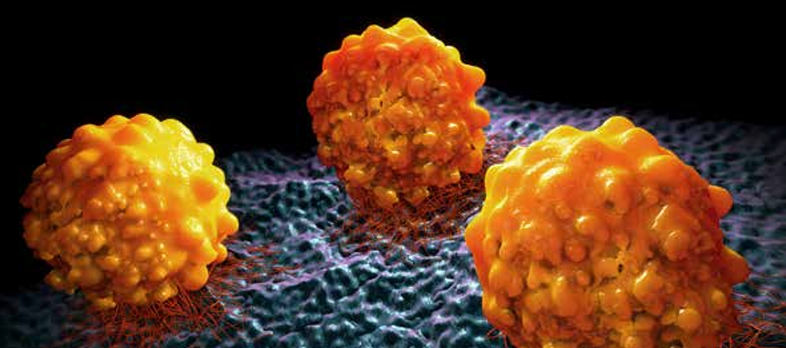Doctors’ Debate: Frontline Targeted Therapies Inform Treatment Decisions in HCC
Richard S. Finn, MD, and R. Kate (Katie) Kelley, MD, emerged in a discussion about the factors that inform treatment decisions for patients with hepatocellular carcinoma during the International Liver Cancer Association Annual Conference 2023.
Richard S. Finn, MD
Professor of Medicine
Division of Hematology/Oncology
Geffen School of Medicine
University of California Los Angeles, CA

The arrival of the combination of atezolizumab (Tecentriq) and bevacizumab (Avastin) in the frontline setting for hepatocellular carcinoma (HCC) marks a significant improvement of survival and objective response rates (ORRs) over the historical treatment of sorafenib (Nexavar). Findings from the IMbrave150 trial (NCT03434379) and the resulting FDA approval of the combination support this indication.1,2
Findings from the HIMALAYA trial (NCT03298451)3–which evaluated tremelimumab (Imjudo; 300 mg, one dose) plus durvalumab (Imfinzi; 1500 mg every 4 weeks), durvalumab (1500 mg every 4 weeks), or sorafenib (400 mg twice daily)–demonstrated an improvement in overall survival (OS) that was observed with what was called in the HIMALAYA trial as the STRIDE regimen of tremelimumab plus durvalumab.
Armed with these 2 immunotherapy combinations, which are excellent options for patients and provide a dramatic improvement in key outcomes overall, a discussion about the factors that inform treatment decisions was highlighted during the International Liver Cancer Association Annual Conference 2023 and centered around identifying the appropriate patient who might derive optimal benefit. The featured discussants were Richard S. Finn, MD, professor of medicine, Division of Hematology/Oncology at the Geffen School of Medicine, and the University of California Los Angeles, and R. Kate (Katie) Kelley, MD, professor of clinical medicine, Department of Medicine (Hematology/ Oncology), University of California San Francisco.
“In the IMbrave150 trial, we observed an improvement in survival and double-digit responses, with an [ORR] of 30%,” Finn said. “These responses were quite durable and include an improvement in progression-free survival [PFS] and quality of life. The agents are also associated with a favorable [adverse] effect profile,” Finn continued.
In defense of the HIMALAYA regimen of tremelimumab plus durvalumab, Kelley noted that “the tremelimumab and durvalumab regimen is also appropriate in the first-line setting and could be a better regimen for some patients. In fact, I don’t think there’s a distinct hierarchy.”
Identifying the appropriate patient for these regimens might be the first step. Finn described the patient who is a candidate for the atezolizumab and bevacizumab combination as being staged as Barcelona C, with extrahepatic spread or a tumor in the liver with portal venous invasion or macrovascular invasion. Other patients include those with intermediate liver cancer and who are not candidates for local regional treatments.
R. Kate (Katie) Kelley, MD
Professor of Clinical Medicine Department of Medicine (Hematology/ Oncology)
University of California San Francisco
Affiliated Faculty Cancer Immunotherapy Program
University of California San Francisco
San Francisco, CA

“These patients undergo local regional treatment for their intermediate disease, but they They might not develop extrahepatic spread but their tumor keeps recurring in the liver despite efforts to control it with local regional treatment,” Finn said. “So all 3 types of patients would be appropriate candidates for systemic treatment.”
When the evidence is regarded objectively, the most active regimen available is the atezolizumab and bevacizumab regimen, “based on a median OS of greater than 19 months, [in which] we observe a hazard ratio of 0.58, an OS of 0.59 and an ORR of 30%,” Finn said.
Contraindications to the regimen include those patients who are at risk for bleeding because of bevacizumab, Finn explained. “Upper endoscopy should rule out any patients at high risk for bleeding,” Finn continued.
For patients who are ineligible, the checkpoint inhibitor regimen of tremelimumab and durvalumab would be the next option because of its superiority to sorafenib. “However, investigators reported a median survival of 16.4 months, no change in PFS, but an ORR of 20%, with a hazard ratio of 0.78,” Finn said.
“The findings from HIMALAYA showed that a meaningful subset of patients in the treatment arm had extraordinarily long survival, with a nearly flat tail of the curve,” Kelley noted. “Further, during the 2023 World Congress on Gastrointestinal Cancer, 4-year OS updates from HIMALAYA were presented, showing that this survival benefit is maintained out beyond the 48-month timepoint, which is really unheard of in advanced HCC.”4

In that updated analysis, the estimated 4-year OS rate with the combination (n = 393) was 25.2% vs 15.1% with sorafenib (n = 389; HR, 0.78; 95% CI, 0.67-0.92; 2-sided P = .0037; 78% data maturity), showing similar magnitude of benefit from the 3-year landmark analysis, which revealed an OS rate of 30.7% with the combination and 19.8% with sorafenib alone. Median OS was 16.4 months (95% CI, 14.2-19.6) and 13.8 months (95% CI, 12.3-16.1) with the combination and sorafenib, respectively.4
“The proportions with prolonged survival at 36 and 48 months correlated strongly with treatment response tumor,” Kelley said. “Patients with stable disease, partial response, or complete response, had an even higher likelihood than the overall population of being in the group with ongoing response at 4 years with a 32% to 36% chance of overall survival at 4 years for patients with at least stable disease as best response, and nearly 70% chance of overall survival for those patients with partial response or complete response,” Kelley continued. “The relationship between disease control and overall survival reinforces the impression that these patients are experiencing robust and durable immune-mediated anti-tumor effects.”
Turning to patient cases to support their arguments, Finn described a patient who was in visceral crisis from tumor burden who required an immediate response.
“My choice for this patient was atezolizumab and bevacizumab because he required an objective response,” Finn said. “Atezolizumab and bevacizumab is the best way to obtain a response.” Although the patient had distant coronary disease, bleeding events in HCC are relatively low as far as high-grade events, according to findings from IMbrave150. “I believe that the risk benefit very much favored atezolizumab and bevacizumab and real-word studies confirm that the use of atezolizumab and bevacizumab in patients who are Child-Pugh [class] A or B have a similar risk of bleeding.” On follow-up, Finn said the patient had a significant response and his liver function normalized, his AFP levels became undetectable and he gained 30 pounds.
Kelley pointed out the shortcomings of IMbrave150. She noted that the trial did not present data beyond the 18-month mark and as a result, “we don’t know if all of the responses in IMbrave150 were truly deep and durable. A subset of those responses might have been attributed to just the bevacizumab component of the regimen,” Kelley said.
“Should we be focusing on the median survival or on long-term durability of survival at clinically-relevant landmarks?” asked Kelley. “Patients in the clinic care deeply about the chances of being alive 2, 3, 4, or 5 years, not about whether they’re going to gain a transient survival prolongation of just a few months. I think they care about the chances of having an immune-mediated response with longterm prolongation in survival,” she said.
“The challenge with this analysis is that patients need to live long enough to get to these landmark end points. The hazard ratio represents the risk reduction and with IMBrave 150 here was a 42% reduction in the risk of death as compared to sorafenib, whereas in HIMALAYA that was only a 22% reduction as compared to sorafenib,” Finn said.
The other point Kelley noted was about safety issues. She said that bevacizumab has been associated with a higher risk of vascular complications including the risk of major bleeding and arterial and venous blood clots which can require treatment interruption or be life-threatening.
Conversely, the dual immune checkpoint inhibitor regimen of STRIDE has its own toxicities, including a higher rate immune-related toxicity that requires corticosteroid relief compared with IMbrave150. These regimens require a thorough risk-benefit analysis on the clinician’s part, Kelley said.
The Future Landscape
Without a doubt, the future landscape in HCC looks a lot better than in recent years. At the recent 2023 American Society of Clinical Oncology Annual Meeting, Finn presented the phase 1b/2 results from the MORPHEUS trial (NCT04524871).5 In MORPHEUS, the anti-TIGIT agent tiragolumab was added to a regimen of atezolizumab and bevacizumab in patients with unresectable, locally advanced or metastatic HCC. Confirmed ORR was higher in the treatment arm (42.5%; n = 40) compared with the control arm (11.1%; n = 18) after a median follow-up of 14.0 months in the treatment arm and 11.8 months in the control arm of atezolizumab plus bevacizumab alone.
Studies evaluating earlier-stage patients with liver cancer have also been reported. For example, the IMbrave050 trial (NCT04102098) enrolled patients at high risk of recurrence and evaluated atezolizumab and bevacizumab vs active surveillance.6 Findings suggest an improved recurrence-free survival in patients with HCC following surgical resection or ablation.
“We’re waiting on regulatory approval for that regimen for patients at high risk after surgery,” Finn said.
Both discussants agreed that this was an exciting time in HCC, with emerging therapies being explored and new agents nearing regulatory consideration.
REFERENCES:
1. FDA approves atezolizumab plus bevacizumab for unresectable hepatocellular carcinoma. FDA. News release. May 29, 2020. https://bit.ly/3sUHRea. Accessed September 17, 2023.
2. Finn RS, Qin S, Ikeda M, et al. Atezolizumab plus Bevacizumab in Unresectable Hepatocellular Carcinoma. N Engl J Med. 2020;382(20):1894-1905. doi:10.1056/NEJMoa1915745
3. Abou-Alfa G, Chan SL, Kudo, M, et al. Phase 3 randomized, open-label, multicenter study of tremelimumab (T) and durvalumab (D) as first-line therapy in patients (pts) with unresectable hepatocellular carcinoma (uHCC): HIMALAYA. J Clin Oncol. 2022;40(suppl 4):379-379. doi:10.1200/JCO.2022.40.4_suppl.379
4. Sangro B, Chan S, Kelley R, et al. SO-15 Four-year overall survival update from the phase 3 HIMALAYA study of tremelimumab plus durvalumab in unresectable hepatocellular carcinoma. Ann Oncol. 2023;34(1):S168. doi:10.1016/j.annonc.2023.04.487
5. Finn RS, Ryoo BY, Hsu CH, et al. Results from the MORPHEUS-liver study: Phase Ib/II randomized evaluation of tiragolumab (tira) in combination with atezolizumab (atezo) and bevacizumab (bev) in patients with unresectable, locally advanced or metastatic hepatocellular carcinoma (uHCC). J Clin Oncol. 2023;4 (suppl 16; abstr 4010):4010-4010. doi:10.1200/JCO.2023.41.16_suppl.4010
6. Chow P, Chen M, Cheng AL, et al. CT003 - IMbrave050: Phase 3 study of adjuvant atezolizumab + bevacizumab versus active surveillance in patients with hepatocellular carcinoma (HCC) at high risk of disease recurrence following resection or ablation. Presented at: AACR Annual Meeting 2023. Abstract CT003. Accessed September 17, 2023. https://bit.ly/3Ln8bDV

Advances in Subsequent Therapies Shake Up Sequencing of ccRCC Treatment
April 25th 2024With the approval of belzutifan and other newer data for treating patients with recurrent renal cell carcinoma, the state of subsequent therapies is advancing beyond the reuse of frontline options with impacts on duration of response and quality of life.
Read More
Novel Approaches Focus on Limiting Toxicity in Older Patients With ALL
April 22nd 2024The major challenges for clinicians treating older patients with acute lymphoblastic leukemia surround the emergence of resistance to existing therapies and the toxicities associated with current chemotherapies.
Read More
Ornstein Advises on Starting Dose and Management of Lenvatinib in RCC
April 21st 2024During a Case-Based Roundtable® event, Moshe Ornstein, MD, MA, provided guidance on dosing and toxicity concerns in a patient treated with lenvatinib plus pembrolizumab for advanced renal cell carcinoma.
Read More